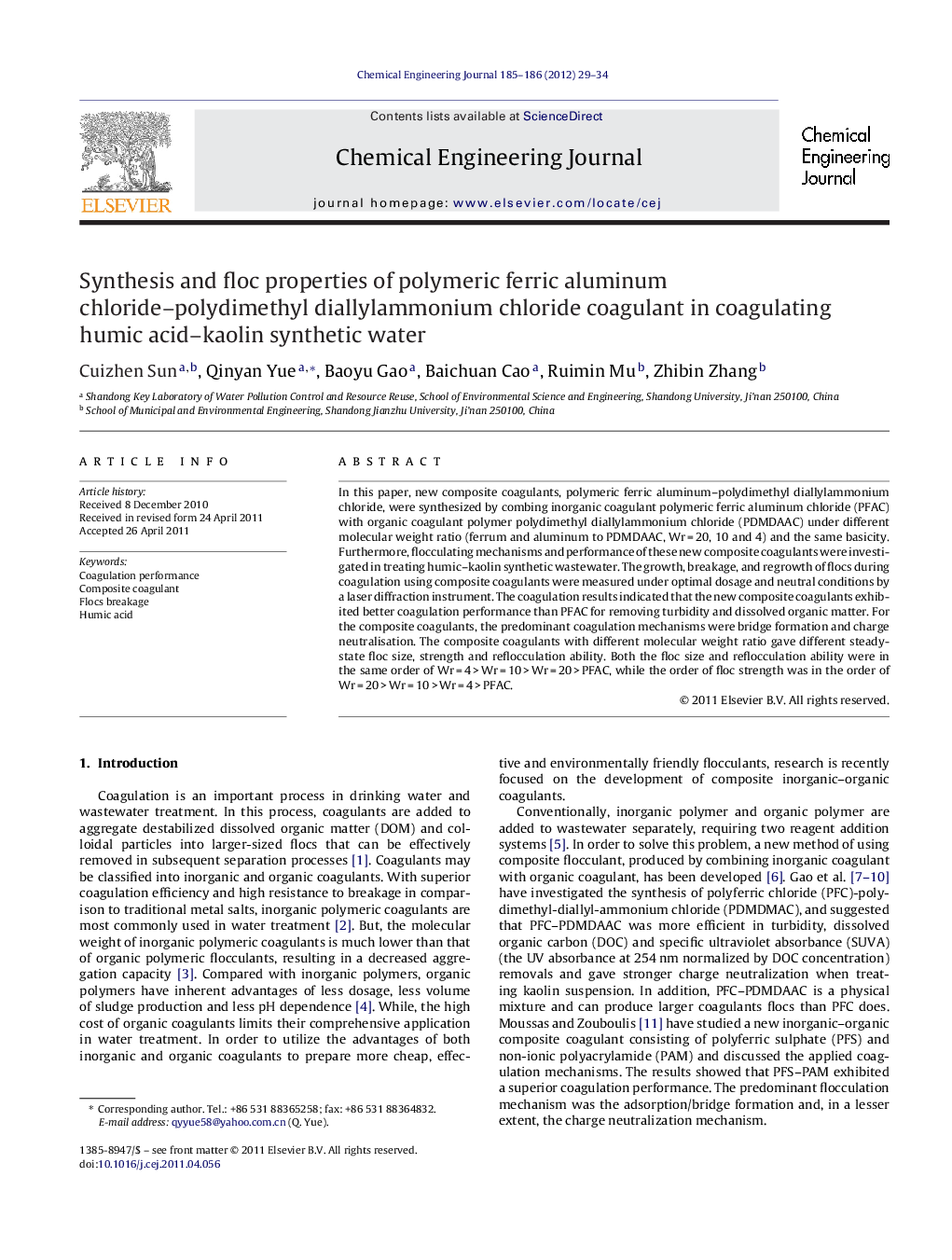| Article ID | Journal | Published Year | Pages | File Type |
|---|---|---|---|---|
| 150131 | Chemical Engineering Journal | 2012 | 6 Pages |
In this paper, new composite coagulants, polymeric ferric aluminum–polydimethyl diallylammonium chloride, were synthesized by combing inorganic coagulant polymeric ferric aluminum chloride (PFAC) with organic coagulant polymer polydimethyl diallylammonium chloride (PDMDAAC) under different molecular weight ratio (ferrum and aluminum to PDMDAAC, Wr = 20, 10 and 4) and the same basicity. Furthermore, flocculating mechanisms and performance of these new composite coagulants were investigated in treating humic–kaolin synthetic wastewater. The growth, breakage, and regrowth of flocs during coagulation using composite coagulants were measured under optimal dosage and neutral conditions by a laser diffraction instrument. The coagulation results indicated that the new composite coagulants exhibited better coagulation performance than PFAC for removing turbidity and dissolved organic matter. For the composite coagulants, the predominant coagulation mechanisms were bridge formation and charge neutralisation. The composite coagulants with different molecular weight ratio gave different steady-state floc size, strength and reflocculation ability. Both the floc size and reflocculation ability were in the same order of Wr = 4 > Wr = 10 > Wr = 20 > PFAC, while the order of floc strength was in the order of Wr = 20 > Wr = 10 > Wr = 4 > PFAC.
► A new composite polymeric coagulant was prepared. ► Application for humic acid–kaolin synthetic water treatment was investigated. ► The growth, breakage, and regrowth of flocs were measured. ► The predominant coagulation mechanisms were studied.
